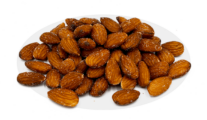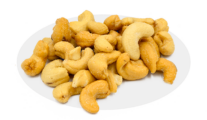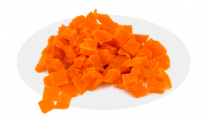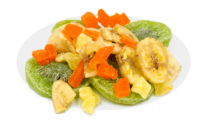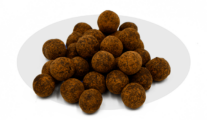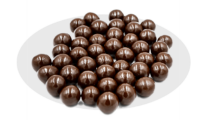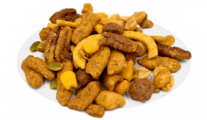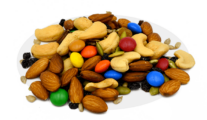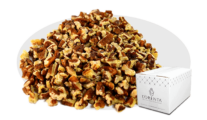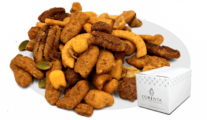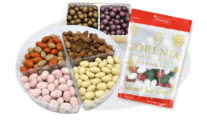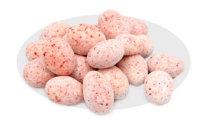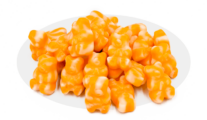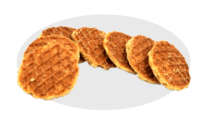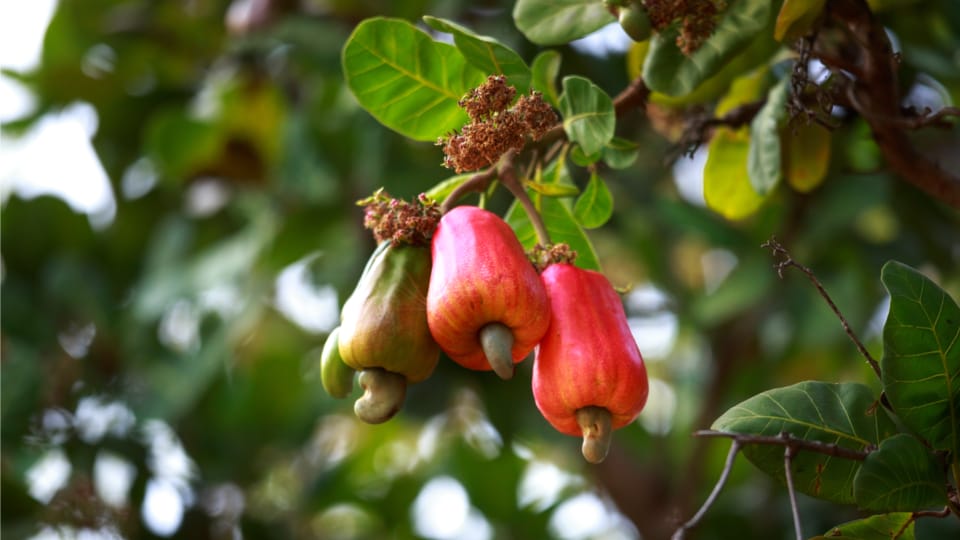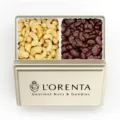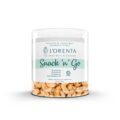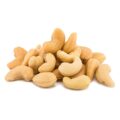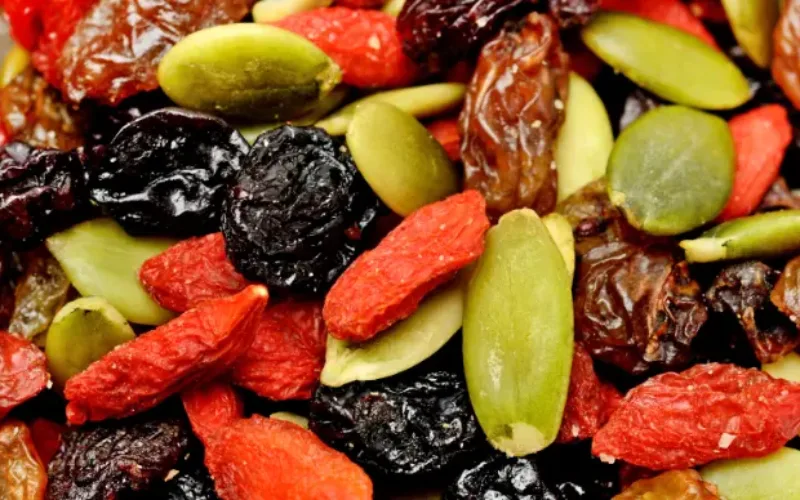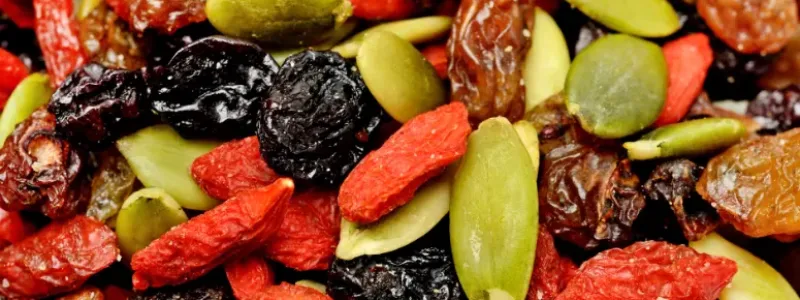Written By Sam Henselijn
Who doesn’t love cashews? Besides being delicious and nutritious, these nuts have a buttery, sweet, and mellow taste. But do you know where cashews come from? Here’s everything you might be wondering about the cashew fruit, including whether or not you can eat it, what they taste like, how the nuts grow, and more interesting facts. Read more in this cashew fruit 101 article!
Definition of cashew fruit
As the fruit is commonly referred to in English, the cashew apple is botanically considered a false fruit – or a pseudocarp. The cashew fruit as a whole is made up of the cashew apple and the cashew nut. Cashew apples are considered an “accessory” fruit since they do not encase the seeds of the plant. The actual fruit is the shell that contains the cashew seed attached to the end of the apple.
“Cashews are some of the most delicious, versatile, and healthy nuts available. While the nuts typically get all the praise, the fruit is equally wonderful and full of good fats, proteins, critical vitamins, and minerals.“
– Sam Henselijn, Author and CEO at L’Orenta Nuts.
Brief history and origin of the cashew fruit and cashew tree
The cashew tree is a small evergreen tropical tree, growing to 25–30 feet in height. It produces highly valuable and increasingly popular cashew nuts and the cashew apple. Originally from Brazil, they were brought to Goa, India, in the 1560s by Portuguese colonists. From there, they spread to Southeast Asia and finally Africa, where they are now cultivated extensively.
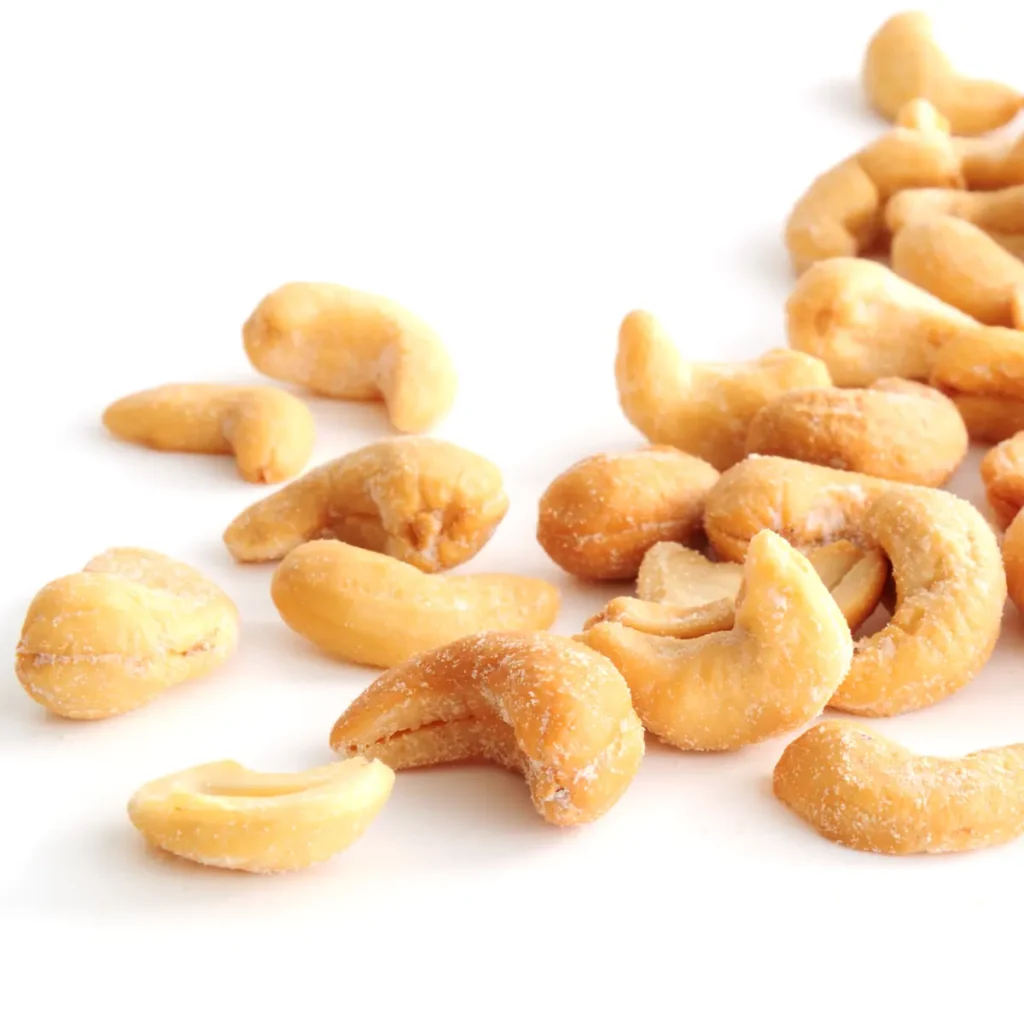
The importance of cashew fruit
Cashew production has a significant economic impact on many countries. Nutritionally, cashews are incredibly rich, containing many important vitamins and minerals. Traditionally, the fruit juice has also been used as a home remedy to treat a number of health conditions.
Characteristics of the cashew fruit
Cashew apples are oblong-shaped and brightly colored, with varying shades of yellow, orange, and red. In case you’re wondering: Yes, cashew fruits are totally edible! In this case, the fruit is actually the “cashew apple,” which is the fleshy part that encases the cashew nut. The flavor is delicate, sweet, and slightly acidic. Ripe fruits are super juicy and very aromatic.
Cashew nut and cashew apple
One curious characteristic is the fact that the seed develops before the apple. When the seed becomes fully grown, the apple forms, growing into a plump, fleshy shape. It typically takes around months for the apples to develop after flowering.
Cashew fruit and cashew nut
A fun fact: the cashew fruit – also known as cashew apple – is mistakenly thought to be the fruit of the cashew tree. The nuts are the real fruit, while the apple is a “fake fruit” or the fruit’s swollen stem. The nut actually grows first, with the apple developing later.
The cashew apple is rich and very aromatic, with a soft and juicy flesh, and a fruity-floral aftertaste that counterbalances its acidity. The nut, on the other hand, has a completely different flavor profile. They have a rich, nutty flavor, similar to almonds or macadamias.
Nutritional values of cashew fruit
Nutritionally, the cashew fruit is rich in vitamin C, carotenoids, and phenolic compounds. It is also an excellent source of Vitamin A, potassium, and iron. It’s also full of antioxidants and phytochemicals! Both the nut and the fruit have several health benefits, including boosting your immune system, protecting against chronic diseases, and promoting healthy skin and hair.
In addition to essential vitamins and minerals, cashew apples also contain tannins. The compounds are responsible for giving the fruits their characteristic astringent taste. Tannins have also been shown to help our bodies fight against inflammation and are used to reduce symptoms associated with sore throats.
Cashew fruit in food and drinks
There are many ways to enjoy both parts of the cashew besides simply enjoying them in their natural state. This is a versatile fruit and can be eaten raw or used in several recipes: it’s delicious, turned into jam, or added to salads. In Brazil, it is often added to savory dishes to provide a touch of sweetness and acidity.
Most people are familiar with the nut, but since they’re hard to come by, the cashew fruit can feel like a challenge in terms of culinary uses. Dried cashews are great in trail mixes or tossed with greens for a fresh and bright salad. When fresh, the fruit can also be enjoyed in a tangy vinaigrette or simply on top of yogurt with some granola and a drizzle of honey to cut through the acidity.
Cashew apple juice
The cashew juice is made by juicing the cashew fruit. It’s super popular in Brazil and very refreshing when served cold. Not to mention, it’s also a great source of vitamin C!
Cashew butter
Cashew butter is another popular way to enjoy cashews, a delicious spread made from roasted or sometimes raw cashews. It’s rich, creamy, and full of healthy fats. Plus, you can easily make it a home with just a bag of nuts and a heavy-duty blender or food processor!
Cashew tree cultivation and growth
Cashew nuts are relatively simple to grow but need a specific environment and the right growing conditions. Regarding care, pruning, and mulching regularly are crucial steps to ensure the tree grows strong and healthy.
Fun fact: The scientific name for the cashew tree is Anacardium occidentale.
Soil and climate requirements of cashew trees
Native to tropical regions, Cashew trees, as well as a number of fruit trees, fare better in warm and humid climates. In terms of soil, they prefer a more acidic, well-draining loamy growing medium.
Harvesting and processing of cashew fruit and nut
Cashew apples are often neglected in cultivation by the popular nuts. Due to their excessively short shelf life, the fruits are considered a secondary crop to the seed and are sometimes detached and discarded.
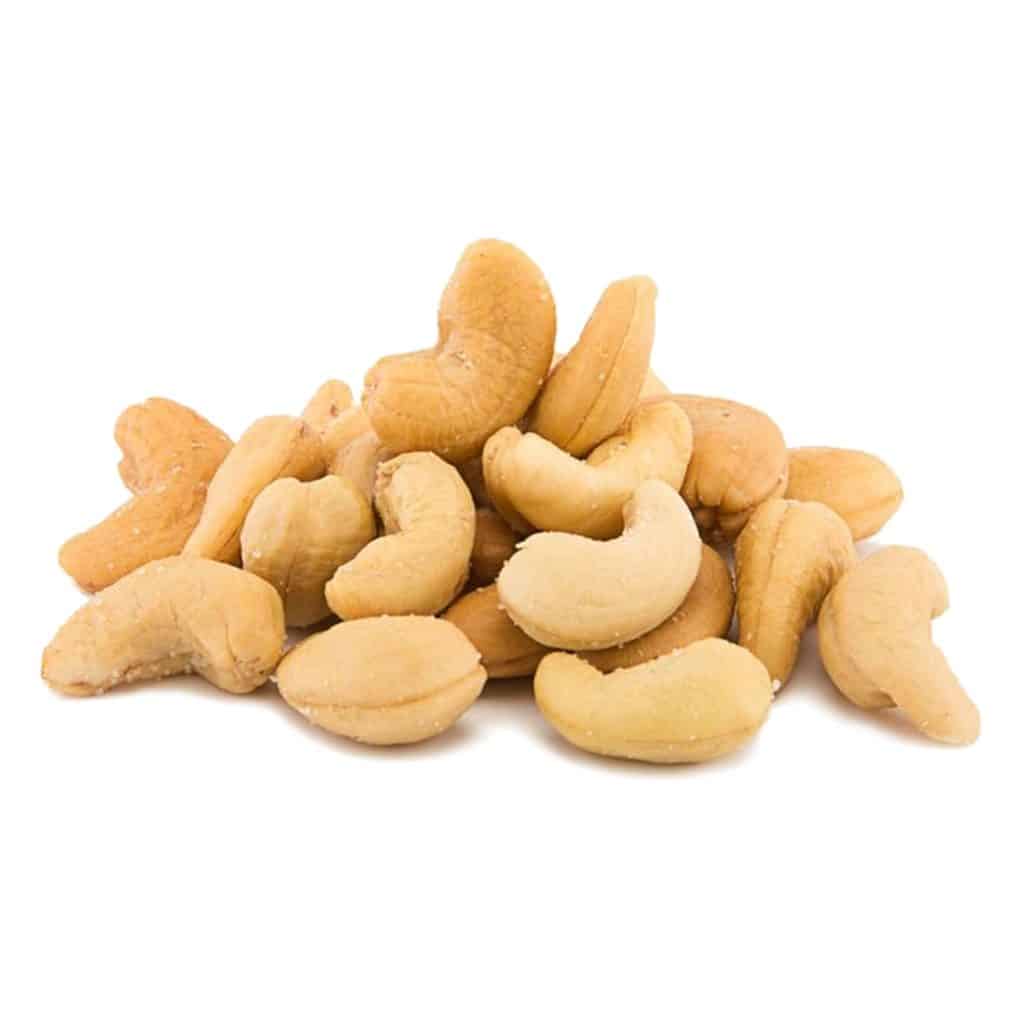
Cashew fruit around the world
Different regional names, including Marañón in Central America, Anacardier, or Acajou in France know cashew fruits. Jambu Monyet or Jambu Monet in Indonesia and Malaysia. Merey is in Venezuela, Caju or Cajueiro is in Brazil, Maranon or Cajuil is in Puerto Rico, and Mamuang or Himmalphan is in Thailand.
Cashew fruit in South America and Central America
The cashew is native to two major regions of the world, South America and the Caribbean, in an area that goes from southern Mexico to Peru, and from Brazil and the West Indies. Today, the major cashew-growing countries in the continent are Brazil, Chile, Colombia, and Bolivia.
Cashew fruit in Southeast Asia
While delicious, cashew apples are sometimes considered too astringent. In some Asian countries, it’s common to finely slice the fruits and sprinkle the pieces with salt to reduce their fibrous texture and acidity.
Cashew fruit in Costa Rica
Cashews are known as Marañón in Costa Rica, where they can be found in several food markets, especially on the Pacific Coast.
Upcycled cashew fruit and its uses
Good news for the planet! Upcycled cashew fruit has been used to produce sustainable and versatile whole-food plant-based meat alternatives. That’s a great and healthy reason to upcycle cashew apples.
Cajú love and its significance in Brazil
According to the United Nations, about a third of food produced goes to waste, which equals nearly 1.3 billion tons annually. An alarming 2.2 million tons of cashew fruits have been going to waste in Brazil alone from the cashew nut industry. In 2021, Cajú Love has upcycled over 105,000 cashew apples by turning them into a sustainable and clean plant-based staple. The pioneer company has developed a new plant-based staple from upcycled cashew fruits. Their efforts help conserve energy in food production, reduce food waste, soil exploitation, and water usage, and ultimately provide an additional income stream for local farmers. That’s good news for the Brazilian cashew fruits.
Alana Lima, along with Felipe, are the Co-Founders of Cajú Love. We tip our hat to them for such a wonderful and needed accomplishment!
Interesting facts about cashew apples
- Cashew apples are available year-round in tropical climates. [source]
- Cashew trees are not commercially produced in the United States.
- One curious characteristic is the fact that the seed develops before the apple. When the seed becomes fully grown, the apple forms, growing into a plump, fleshy shape. It typically takes around months for the apples to develop after flowering.
- Different regional names, including Marañón in Central America, Anacardier or Acajou in France, Jambu Monyet or Jambu Monet in Indonesia and Malaysia, Merey in Venezuela, Caju or Cajueiro in Brazil, Maranon or Cajuil in Puerto Rico, and Mamuang or Himmalphan in Thailand know cashew fruits.
- Cashew apples are sometimes considered too astringent. In parts of Asia and Africa, it’s common to finely slice them and sprinkle the pieces with salt to reduce their fibrous texture and acidity.
- Cashew apples are often neglected in cultivation by the popular cashew nuts. Due to their concise shelf life, the fruits are considered a secondary crop to the seed and are sometimes detached and discarded, left on the ground as food for livestock.
Cashews and cashew fruit related articles
Still interested in learning more about the cashew fruit? Keep reading for more cashew and cashew fruit related articles along with some extra interesting facts.
Can you eat cashew fruit?
Can you eat the fruit of cashew? The answer may surprise you. Cashew fruit is always in demand as many people love it. But why? Read our article aptly named Can You Eat Cashew Fruit to discover the detailed answer to the question and more fun facts.
Health benefits of roasted and salted cashews
You can read our article and learn the top 5 health benefits of roasted and salted cashew nuts, with a step-by-step guide on how to make them at home.
It’s a fact: Our full selection of cashew nuts.
Cashews are some of the most delicious, versatile, and healthy nuts available. While the nuts typically get all the praise, the fruit is equally wonderful and full of good fats, proteins, critical vitamins, and minerals. Looking for the best quality cashews online? Have a look at our full selection of cashews here!
Related Article:
We answer the question Is Cashew a Nut?
FAQ: Cashew Fruit Explained
Why is cashew fruit not sold?
Cashew fruit is not as widely sold as the cashew nut due to several reasons. The cashew nut is the seed found at the bottom of the cashew apple, and it is the primary commercial product due to its higher demand and value. The cashew apple is highly perishable and has a short shelf life, making it challenging for widespread distribution. Additionally, the cashew apple is delicate and easily bruised during transport, limiting its commercial viability compared to the more resilient and shelf-stable cashew nut. Despite these challenges, in some regions, the cashew apple is used to make beverages, jams, and other local products.
What is Cashew Fruit?
Cashew fruit, often referred to as the cashew apple, is technically a pseudocarp or a false fruit. The true fruit is the cashew nut, which is attached to the bottom of the cashew apple. The cashew apple is considered an “accessory” fruit since it does not encase the plant’s seeds.
Can You Eat Cashew Fruit?
Yes, cashew fruits are edible. The cashew apple has a delicate, sweet, and slightly acidic flavor. It is juicy, and aromatic, and can be consumed raw or used in various recipes, such as jams, or added to salads for a touch of sweetness and acidity.
Read our full article Is Cashew a Nut?
Where Do Cashews Come From?
The cashew tree is a tropical evergreen tree native to Brazil. It was brought to Goa, India, by Portuguese colonists in the 1560s and from there spread to Southeast Asia and Africa. Today, cashew trees are cultivated in many tropical countries around the world.
What is the Nutritional Value of Cashew Fruit?
Cashew fruit is rich in vitamin C, carotenoids, and phenolic compounds, making it an excellent source of antioxidants. It also contains Vitamin A, potassium, iron, and other beneficial nutrients that can boost the immune system, protect against chronic diseases, and promote healthy skin and hair.
How is Cashew Fruit Used?
Cashew fruit can be eaten raw, turned into jam, or added to savory dishes in some cultures for its sweet and acidic properties. Cashew juice, made by juicing the fruit, is a popular and refreshing drink in Brazil.
What Makes Cashew Fruit Unique?
The cashew tree bears a unique characteristic where the seed (cashew nut) develops before the apple. This unusual development process results in the nut hanging from the bottom of the apple, making it a fascinating plant both botanically and culinarily.
What Does Cashew Fruit Taste Like?
The cashew apple has a rich and aromatic flavor, with soft and juicy flesh that offers a fruity-floral aftertaste. This taste profile counterbalances its acidity, making it a refreshing fruit to consume.
How are Cashew Trees Cultivated?
Cashew trees thrive in warm and humid climates and prefer acidic, well-draining loamy soil. Regular pruning and mulching are essential for the tree’s growth and health.
What’s the Economic and Environmental Impact of Cashew Fruit?
Cashew production significantly impacts many countries’ economies. Innovations like upcycling cashew fruit for sustainable, plant-based meat alternatives are emerging, helping to reduce food waste and provide additional income streams for local farmers.
Sam Henselijn Author’s Biography – Meet L’Orenta Nuts CEO
Copyright 2024 L’Orenta Nuts
L’Orenta Nuts proudly holds the SQF food safety certification, symbolizing our unwavering dedication to upholding the highest standards of food safety and quality. This certification guarantees that our products undergo rigorous scrutiny, ensuring transparency, traceability, and adherence to global food safety regulations for the utmost consumer confidence.
L’Orenta Nuts has the HACCP (Hazard Analysis and Critical Control Points) certification is a systematic approach to identifying, evaluating, and controlling food safety hazards. It ensures that food products are produced and handled in a manner that minimizes risks and complies with safety standards.
Our GMP (Good Manufacturing Practices) certification ensures that a manufacturing facility adheres to comprehensive quality and safety standards while producing pharmaceuticals, food, and other consumer goods, promoting consistency, quality, and compliance with regulatory requirements.
L’Orenta is an FDA-approved manufacturing facility and has met the rigorous standards set by the U.S. Food and Drug Administration. It demonstrates compliance with regulations, ensuring the production of safe and high-quality food products.
Copyright 2023 L’Orenta Nuts – Revised May 2023 – Revised March 2024


